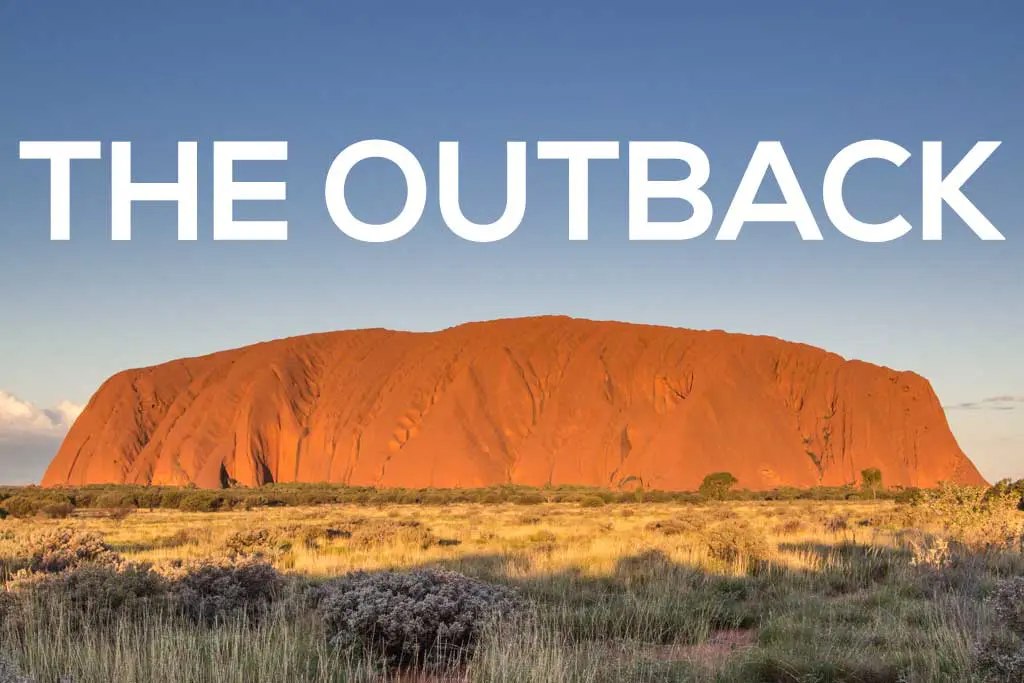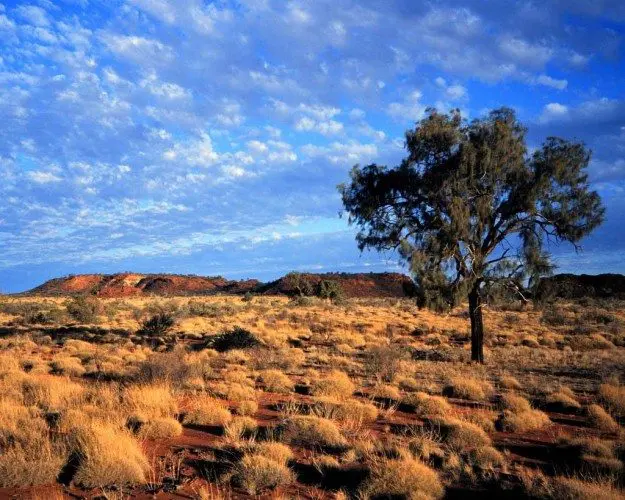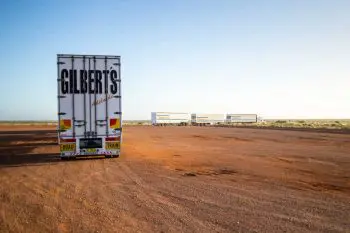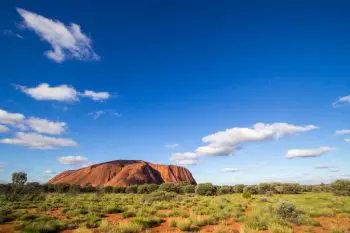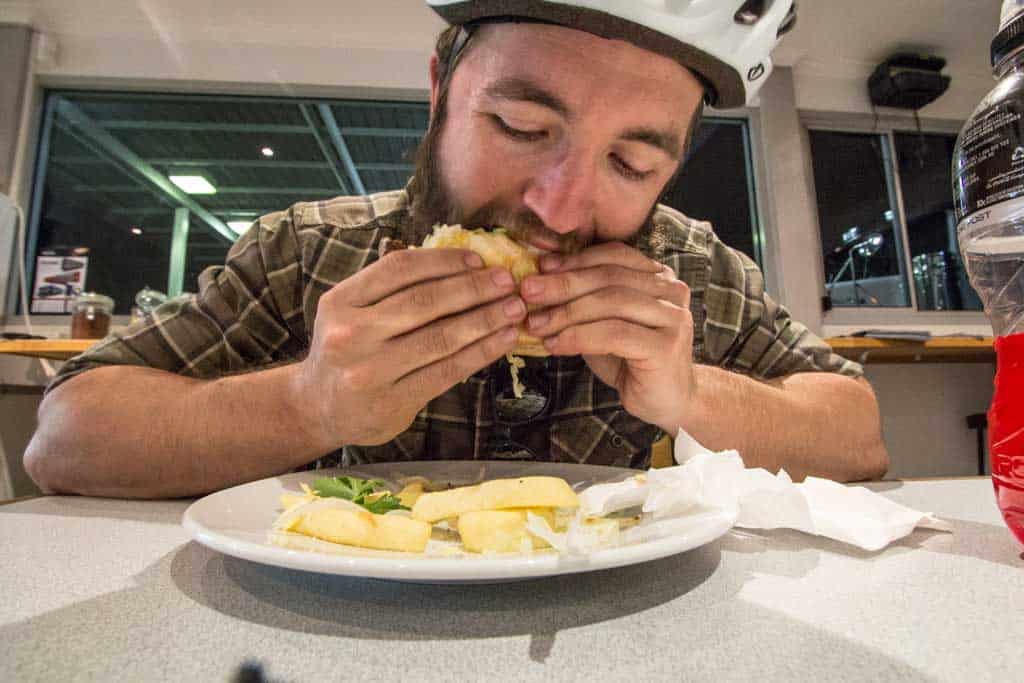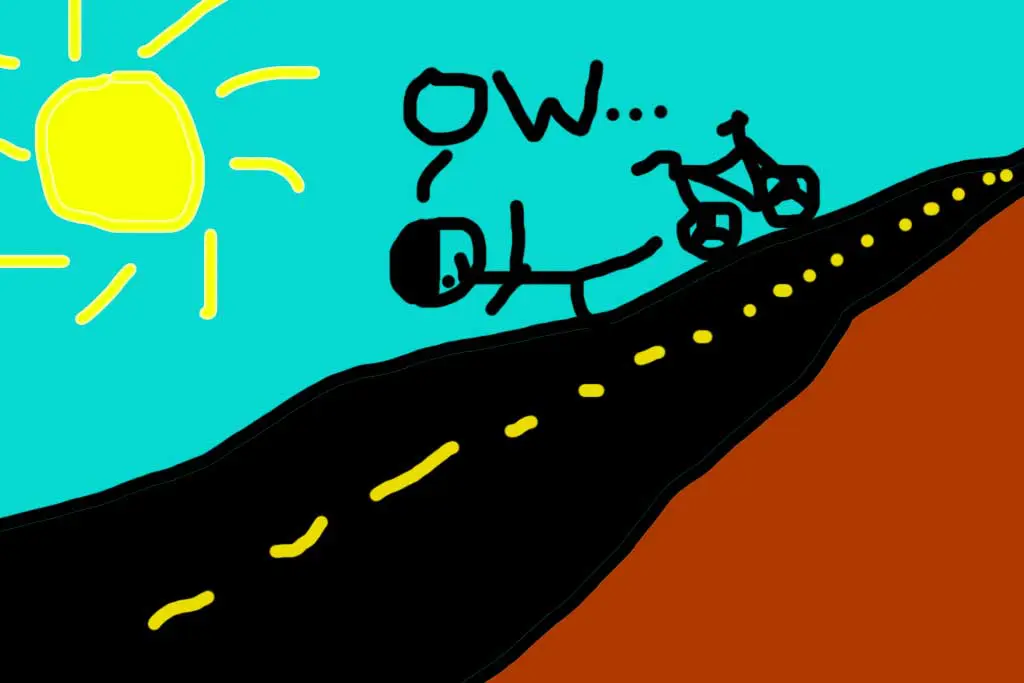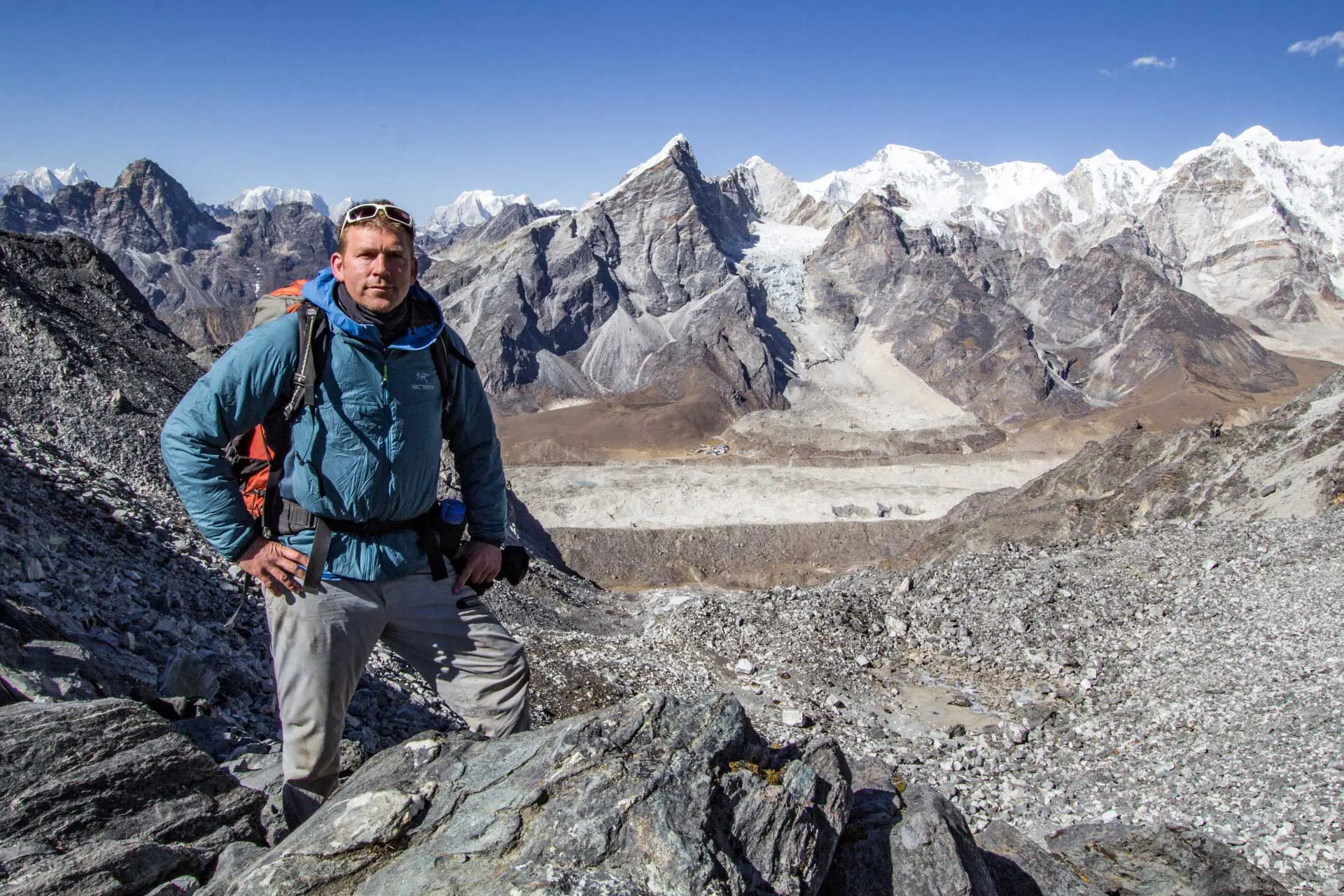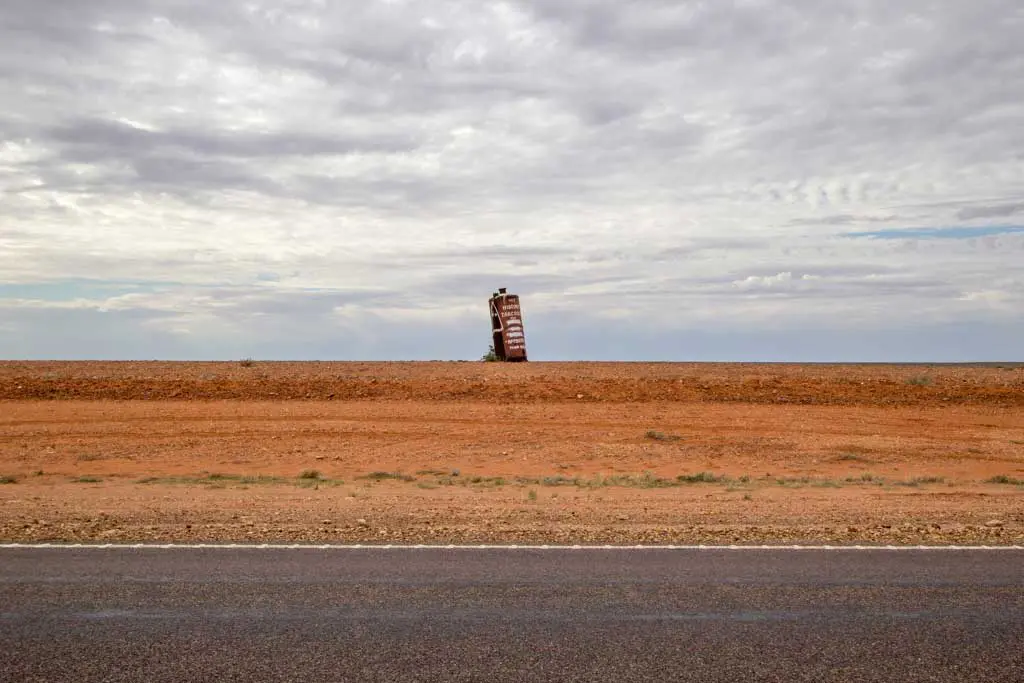A Beginner’s Guide To The Outback
Australia’s Outback doesn’t have clearly defined boundaries, but it can typically be described as anywhere outside major city centers – particularly as you move towards the center of the country.
If you’re unfamiliar with the landscape, it’s essentially a giant desert in the middle of Australia.
It may seem like a sparsely populated and largely desolate place (it is), but that doesn’t mean there’s not plenty to be explored. The freedom offered by Outback travel is an extraordinarily different experience than the one found on crowded Sydney beaches or in hipster Melbourne alleyways.
Outback Facts
- Location: Australia
- Largest city: Alice Springs (25,186)
- Language: English
- Area: ~2,078,935mi² / 5,384,417 km² (6th)
- Currency: Australian dollar (AUD)
- Population: ~690,000
- Time Zone: UTC+8 to +11.5
- Calling Code: +61
- Drives On: Left
- Drinking Age: 18
- Drinking In Public: Illegal
- Drinking Tap Water: Okay
- Flushing Toilet Paper: Okay
- Vaccinations Required: CDC
- Credit Cards: Widely accepted
- Tipping: Not expected
- Emergency Number: 000
- Outlets: Plug Type I
- Visa Requirements: External Link!
Outback Basics
- LANGUAGE | Although English is the official language in Australia, the Outback is home to many Aboriginal Australians who collectively speak around 150 Aboriginal languages. But don’t worry, you won’t have any problems communicating (in English) – that is, once you get past all of the Australian jargon (hint: arvo = afternoon).
- GETTING AROUND | Chances are that if you’re traveling the outback you’re doing it in a vehicle (although bicycling and walking are also options). If you’re a Grey Nomad, that vehicle is probably a caravan, but if you’re on this website, then your budget is probably limited. There are plenty of rental car companies that provide livable vehicles (Wicked Campers are awful), but carrying a tent in your car can be just as useful. If you’re going to be heading off the beaten path at all, I would seriously consider a 4WD vehicle. Besides the Greyhound (awful), there are not many transportation options for getting around.
- THINGS TO DO | Do you like seeing roadkill, being mobbed by swarms of flies, or sweating uncontrollably when just standing outdoors? Then the Outback is the place for you! But actually, there is quite a bit to see in the Outback (spoiler alert: most of these things are rocks). The Outback is home to Lake Eyre, the lowest place in Australia and (when it fills is) the country’s largest lake. There are national parks, hot springs, 4WD tracks, and even camel races.
- WEATHER | Temperatures in the Outback can reach 120°F (50°C) during summer days and can drop to around -15°F (10°C) during winter nights. And as I found out firsthand, despite the Outback being an enormous and largely arid landscape, rainfall is not uncommon (especially during the summer) and most parts of the outback receive around 250 mm of precipitation per year. Come to the Outback prepared for anything (especially alien abduction).
Outback Destinations
- ULURU | Uluru, or Ayers Rock, is literally the centerpiece of the Outback. Situated in what’s basically the middle of Australia, it’s one of the most recognizable sights in the country. The small nearby community of Yulara is about 10 mi / 16 km north of the rock and serves as a base for visitors (camping/overnighting in Uluru-Kata Tjuta National Park is prohibited). There’s even Ayers Rock Airport (AYQ) where you can find inexpensive flights to from all around Australia. More on Uluru here.
- ALICE SPRINGS | Alice Springs is the largest town in the Outback, and due to its centralized location it’s become a hub for those wishing to explore the vast emptiness. It’s a day’s drive to Uluru-Kata Tjuta National Park, Kings Canyon, the Devils Marbles, and dozens of other Outback attractions. Alice Springs is located on the Stuart Highway and can be reached via car, bus, or plane (it has an airport, ASP). More on Alice Springs here.
- COOBER PEDY | In the middle of the state of South Australia, you will find the small mining town of Coober Pedy. It’s famous for its opal mines and underground dwellings. Why underground? Because it’s too hot above ground during the long summer days. The town still provides much of the world’s gem-quality opal and has become a hotspot for tourists wanting to buy or stare at overvalued rocks. More on Coober Pedy here.
- THE DEVILS MARBLES | The Devils Marbles (Karlu Karlu) are a collection of huge granite boulders in the Northern Territory north of Alice Springs. Honestly, they’re not much to look at unless you happen to be particularly interested in their geological origins or you happen to be driving passed them on the Stuart Highway. I told you there are a lot of rocks to look at out here. There’s a huge car camping area behind the reserve (no pets) that costs something like $3 into an honesty box to stay at. More on the Devils Marbles here.
- NATURE AREAS | In the Outback you can also find Kings Canyon, the Kimberly, Kakadu National Park, Litchfield National Park, Katherine Gorge, and a number of other national parks and nature reserves. Some of these places are easily accessible (Kakadu and Litchfield aren’t far outside Darwin) – others are more of a trek (Wolfe Creek Crater – a meteorite crater 880 meters in diameter). There’s a lot to be explored so make sure you’ve got ample time (and provisions) before heading out into the bush.
Outback Tips & Tricks
- FLIES | Holy hell. Nobody warned me about these things before I set off into the Outback and I cannot understand why. The flies in the Outback (and Australia in general) are horrendous. The stop at nothing as they try to make their way into your every facial orifice. Shaking them off does not work and when you try to slap them, they’re back within seconds. Good luck doing anything outside at any point during the day (they disappear at night). More on the flies here.
- WATER | So what’s the deal with water in this enormous desert? Many of the roadside rest areas have rainwater tanks (that may or may not be filled) you can fill from, but other than these, your options are limited. Unfortunately, most of the taps you will find at caravan parks and gas stations will deliver to you not-so-great-tasting bore water (and purchasing water at stores can be expensive). My recommendation? If you’re in a vehicle, bring as much water as you can as to avoid needing to buy or source water somewhere in the outback. More on Outback water here.
- ANIMALS | A lot of people have an irrational fear of snakes and spiders in the Outback. Yes, there are venomous snakes and spiders in the Outback, but you’re lucky to spot any of them in the wild. The chances that you will be bitten or killed by one? Incredibly low (you have a better chance of hitting a kangaroo and killing yourself in a car accident). What’s more bothersome than the snakes and spiders are rotting kangaroo, sheep, and cow carcasses lining the roads. You can also hope to see (hopefully live) camels, emu, dingos, echidna, wallabies, bats, foxes, cockatoo, wedge-tailed eagles, and more. More on animals here.
- INTERNET | Cellular reception in the Outback are quite scarce, and if you’re going to have any shot at somewhat consistent and reliable service, then you want a Telstra SIM. Wifi in the Outback (particularly at the roadhouses) is jokingly expensive (we’re talking $5 for 10MB), but you can find reliable networks in the larger towns. It’s best to just accept that you’re going to be out of touch at times and know that it’s going to be okay.
- WIKICAMPS | If you’re going to be traveling in the Outback – whether you’re going by vehicle, bicycle, or foot – then you’re going to want the WikiCamps app (iOS/Android). This crowdsourced app provides users with a map of all the campsites, campgrounds, caravan parks, points of interest, and hostels for each Australian state. There’s a comments section for posting and reading about each place, there are filters that allow you to easily sort results (including a “no crocodiles” filter), and you can download the data for offline use. Definitely worth the couple of dollars it costs (after your month-long free trial).
